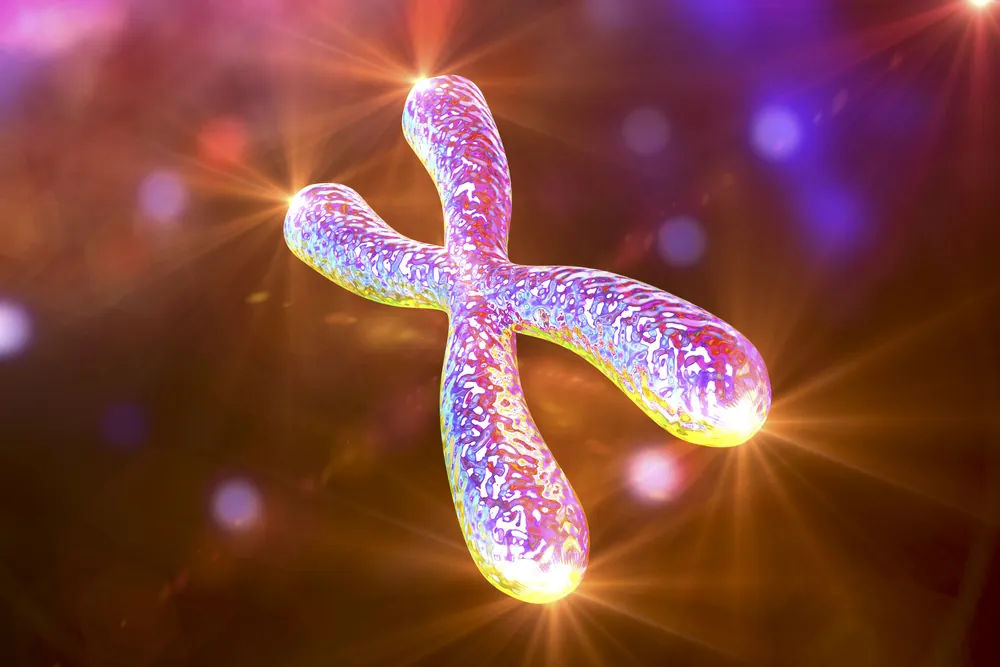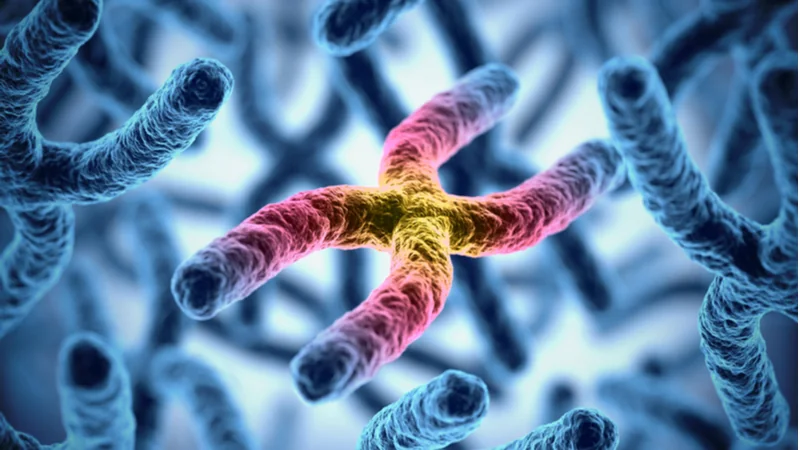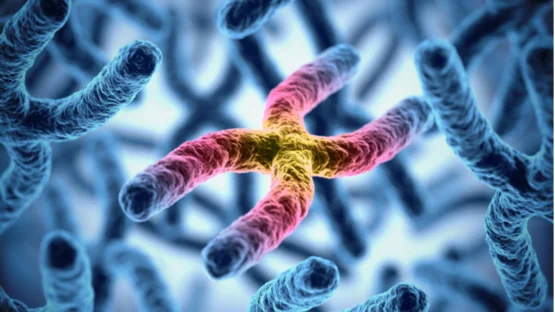A new study in Nature Genetics has further illuminated the genetic regulation of telomere length and what implications it may have for various diseases and longevity.
Telomeres and aging in humans

Read More
At one time the hottest topic in aging, telomeres are the protective caps at the ends of our DNA. They are truncated during the process of DNA replication, making them shorter and shorter with each cellular division. This erosion, alongside other stressors that can damage telomeres, can lead to a number of dysfunctions within a cell.
The classic example is cellular senescence, where a cell loses the ability to divide and begins releasing inflammatory factors. When this happens in a sufficient number of cells, telomere shortening may contribute to aging and age-related diseases [1].
This led to the hypothesis that elongating telomeres could provide a prime target for anti-aging therapies. However, telomeres’ role in aging has turned out to be much more complex than initially hoped.
Lengthening telomeres or increasing telomerase (a telomere-extending enzyme) doesn’t dramatically increase longevity. Further, both can be a risk factor for some age-related diseases, such as cancer [2]. Telomere length also does not predict lifespan across species. For example, mice have telomeres 5-10 times longer than humans despite lifespans which are 30 times shorter [3].
Much is still being discovered about how telomere length influences, and is influenced by, aging. Many environmental factors have been identified that can lead to shorter telomeres, but the genetic factors that control telomere length are relatively less understood [4]. In the largest study of its kind, a collaboration based out of the University of Leicester and Cambridge University has looked at telomere length in 472,174 individuals and related this to their genetic backgrounds and disease outcomes [5].
How do genetics influence telomere length?
The researchers quantified telomere length using qPCR on peripheral leukocytes (white blood cells) from the UK Biobank. Variations between individuals were also examined for each gene. Several known demographic facts were confirmed, including females and individuals of African ancestry having longer telomeres than males and individuals of European ancestry.
Genome-wide association analyses identified 197 gene variants related to telomere length in the study population, including 12 for regulator of telomere elongation helicase 1 (RTEL1) and 13 for telomerase reverse transcriptase (TERT).
Gene variants that have already been associated with telomere length were independently identified by this analysis, validating several previous studies. Many new gene variants were also related to telomere length. Because this study used such a large number of participants, it was able to identify a number of rarer variants. These add to the current understanding of telomere-related biochemical pathways and could spur future investigations as well.
Mathematically, these gene variants explained only 4.5% of the differences in telomere length between individuals. Similarly, taking into account all genome-wide variants (instead of just the 197 statistically significant ones) only accounted for 8.1%.
Using advanced analysis techniques that take into account factors such as gene function and colocalizing expression quantitative trait loci (eQTLs), 114 likely causal genes were identified. Many of these were genes with known roles in regulating telomeres, such as those encoding SHELTERIN and CST (which cap the ends of telomeres), those involved in the alternative lengthening of telomeres pathway, post-translational modifications of telomere proteins, and regulators of the assembly and activity of telomerase.
Other new genes of interest that were likely causal towards telomere length included those involved in DNA replication, recombination, and repair. The metabolism of pyrimidine (of which the DNA components cytosine (C), thymine (T), and uracil (U) are derivatives) also was identified by the Gene Ontology analysis.
Telomere length, healthspan, and lifespan
Since this dataset also included the disease outcomes of its participants, the authors were able to investigate the roles that these gene variants may have played in their risk for various diseases and life expectancy. According to their analysis, genetically determined telomere length was associated with a lower risk of coronary artery disease and a higher risk of several organ-specific cancers.
Using public health modeling methods, the researchers modeled the life expectancy of their study population to determine whether increased telomere length could lead to living longer. At age 40, individuals with telomeres greater than 1 standard deviation higher than the average were expected to live 2.5 years longer than those with telomeres shorter than 1 standard deviation below the average. This observation held both for men and women, using several different life expectancy modeling assumptions.
Here we interrogate a powerful population resource of peripheral leukocyte TL (LTL) measurements, a practical measure of TL that correlates well with TL across different tissues within individuals, that we created in 472,174 well-characterized participants in the UK Biobank (UKB). We increase knowledge of the genetic architecture of LTL several-fold, including identification of multiple new rare and lower-frequency variants associated with LTL. Using the principle of Mendelian randomization (MR), we find evidence to support causal roles for LTL with multiple physiological traits and diverse diseases. We also estimate that people with shorter LTL have a lower life expectancy.
Conclusions
The importance of telomere length in longevity has become a controversial topic over the years. This study confirms the extreme complexity of the topic while simultaneously shedding light on some of those complexities.
The UK Biobank, while somewhat diverse, contains a largely British population, and participants were all between 40 and 69 at age of recruitment [6]. Further research will be needed before confirming these findings in other ages and ethnic backgrounds.
However, the robustness and size of the dataset used is the study’s primary strength. It was able to identify new candidate genes, validate previous findings, and relate these findings to real-world outcomes, such as coronary artery disease, cancer, and life expectancy.
Notably, genetics only accounted for a small percentage of the variation of telomere length across individuals, suggesting that environmental factors, age, and other factors may play an outsized role. Further, telomere length could only account for 2.5 years in life expectancy, comparing participants who were one standard deviation above and below the mean.
While not insignificant, it is considerably less than the effect that other known factors have on life expectancy, such as long-term cigarette smoking (10 years) and diabetes (6 years) at age 40, concurrently validating the premise behind telomere-related therapeutics and tempering expectations for the maximum effect that they could potentially have.
Literature
[1] Chan, S.W.R.L. and Blackburn, E.H. Telomeres and telomerase. Philos. Trans. R. Soc. B (2004). https://doi.org/10.1098/rstb.2003.1370
[2] Haycock, P.C. et al. Association between telomere length and risk of cancer and non-neoplastic diseases. JAMA Oncol. (2017). https://doi.org/10.1001/jamaoncol.2016.5945
[3] Calado, R.T. et al. Telomere dynamics in mice and humans. Semin Hematol. (2013). https://doi.org/10.1053/j.seminhematol.2013.03.030
[4] Li, C. et al. Genome-wide association analysis in humans links nucleotide metabolism to leukocyte telomere length. Am. J. Hum. Genet. (2020). https://doi.org/10.1016/j.ajhg.2020.02.006
[5] Codd, V. et al. Polygenic basis and biomedical consequences of telomere length variation. Nature Genetics (2021). https://doi.org/10.1038/s41588-021-00944-6
[6] Bycroft, C. et al. The UK Biobank resource with deep phenotyping and genomic data. Nature (2018). https://doi.org/10.1038/s41586-018-0579-z





